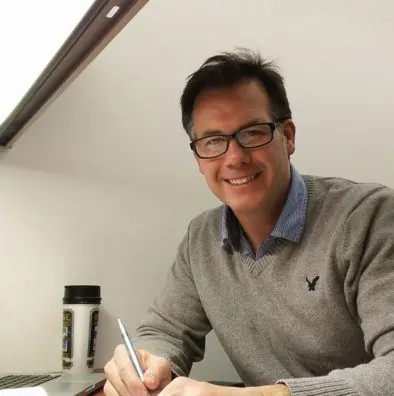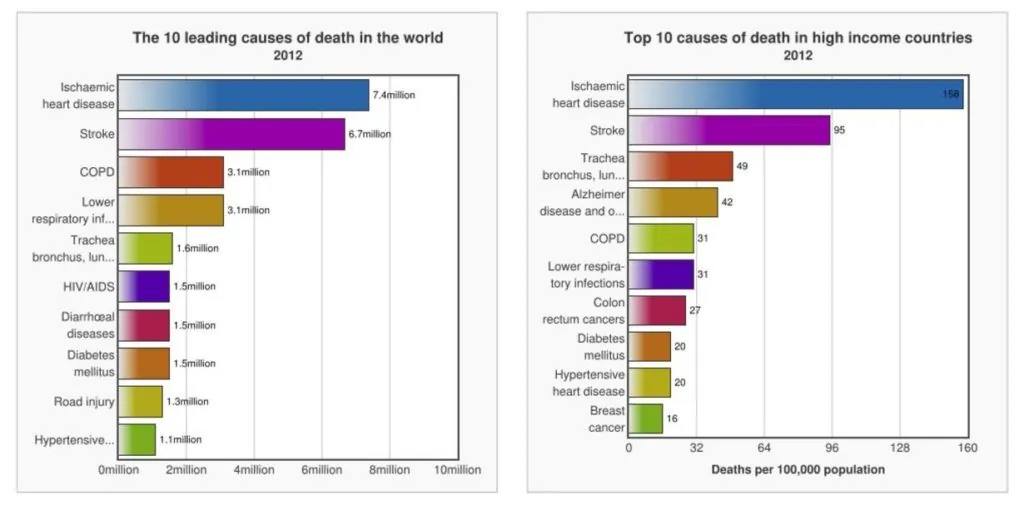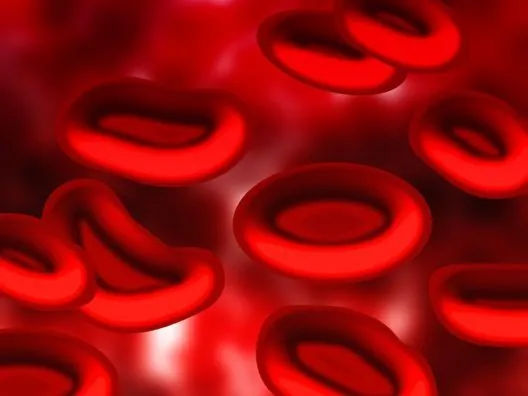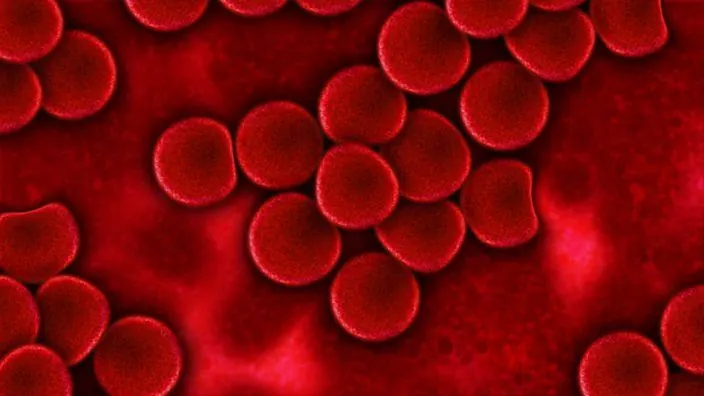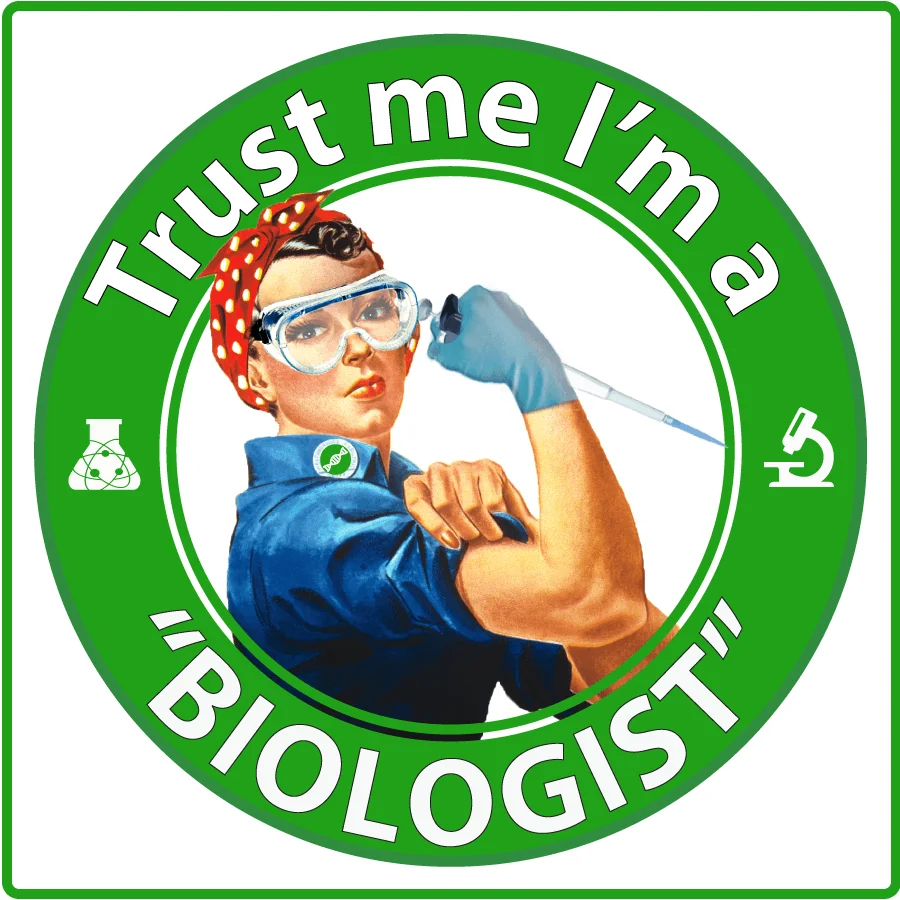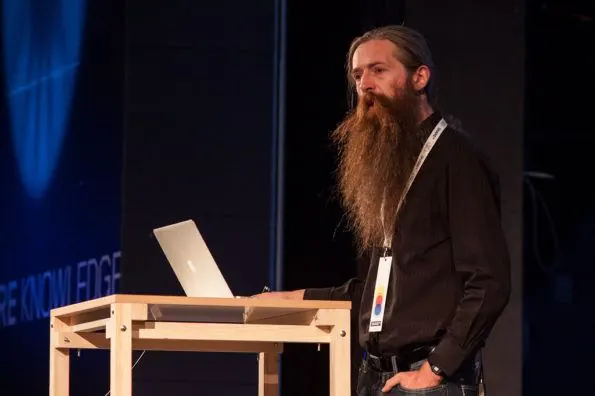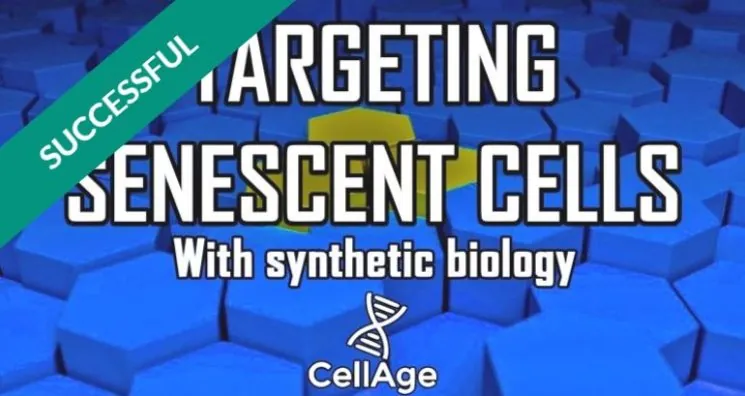Today, we will cover a story about how a member of our community, Mike Daniels, car mechanic turned cancer researcher, was inspired by the work of the SENS Research Foundation to address age-related diseases. What follows is an emotional, gritty but honest life story of someone who took action and is now doing amazing things in his life for science.
Firstly, can you tell us a little about yourself?
Certainly, I am a first year Biostatistics PhD student at the University of Colorado. I met my wife in 2003 from an online dating website just two days after being mobilized for the Iraq war. As a 42-year old father of two daughters, I stay in touch with my parents whom still live in Appalachia where I was raised. I am unsure if I am a contradiction or a bridge between two worlds. Listening to J. D. Vance’s Hillbilly Elegy reminds me of my roots growing up along US 23 in Eastern Kentucky.
In contrast, just yesterday, I presented a journal review to a classroom filled with intellectuals such as doctors, biologists and mathematicians. As a liberal, atheist scientist with religious, conservative family and friends, I understand why voters turned out for president-elect Donald Trump and why protesters are taking to the streets. Carl Sagan said we are nothing but a pale blue dot, a mote of dust in a sunbeam, just to put everything into perspective.
So who am I? I’m the guy who fixed your air conditioner, roofed your house, changed the spark plugs in your car’s engine, worked the production line in a food factory, defended your country during war, waited your table at your favorite restaurant and even washed your dishes after you were done. Now, I want to join the united front to end the most widespread cause of human suffering – aging.
When did you first hear about SENS and what was it that interested you about the concept?
It was a very serendipitous moment that inspired me to read Aubrey de Grey’s book Ending Aging in 2008. I was living in Louisville, Kentucky and spent my free time from working at a White Castle frozen hamburger factory hanging out in a local coffee shop called Heine Brother’s Coffee. Adjacent to that coffee shop was Carmichael’s, a local, independent bookstore. Sitting in a booth in the coffee shop one morning, I was feeling down due to the tough finances of working a blue collar job, lack of sleep from caring for two babies and the misery of war that dominated the news.
Looking down a hallway into the bookstore, a beam of sunlight shone down during a cloudbreak. I left my seat to feel that light on my face to lift my spirits. I must have basked there for nearly a minute. Afterwards, I went straight to my favorite section, Science & Math. And what I found was not just a book, but hope. While Barack Obama was telling us all about hope and change, I was discovering it for myself. Ending Aging spoke to me. Dr. de Grey told us not to accept humanity as the limits of our DNA.
Challenge the status quo and possibly discover how great we may become. Every generation believes that they can do better than their parent’s generation. Until one day that generation wanes into the symptoms of aging. Great men and women lose their dignity because a care worker or family member has to perform what once were remedial tasks for them. Even as their body and mind deteriorates, the younger generation works diligently to absorb their wisdom and love.
This touched me deeply because I loved my parents, grandparents, aunts, uncles, cousins, and other family members and friends. For religious people, you can squelch some of the pain from losing someone to aging with the thought of seeing them again in heaven or some other afterlife concept. As an atheist, I didn’t have that option. The seed of Transhumanism was planted within me and Aubrey de Grey was to blame.
The indecencies attached to the aged bodies of our loved ones wasn’t what sold me on SENS. Dr. de Grey’s analogy of maintaining an antique car caught my attention early in the reading of his book. This was a direct appeal to my inner mechanic. I read during my 30-minute lunch breaks at the White Castle hamburger factory. Separating six burgers into three sets of two on a transfer belt and sliding them into a moving slot to be wrapped in cellophane at a rate of one pair per second, I would let my mind wander into another world.
What are the seven categories of damage that would need to be reversed? Is this list all encompassing? Doing repairs may be easier than changing metabolic pathways, but would it even be possible. What would a society be like if age-related illnesses were eliminated? Aubrey addressed each of these issues and the scientific community slowly started to accept his ideas when they couldn’t disprove them. I was onboard and wanted to be a part of the next step in human improvement.
What did it inspire you to do?
There was this moment where I decided to stop spoon feeding my wife the ideas of SENS and unleashed all my thoughts on her at once. It took place during a long hike where unconsciously I knew she couldn’t escape. She remained quiet and a little scared for hours while I spoke of cellular biology, the ills of aging and my plans to become a doctor or researcher. She held two Master’s degrees. I, on the other hand, was busy retraining National Guardsmen who were heading to Iraq and worked various positions in a frozen food factory along with several low paying manual labor jobs.
I wasn’t naïve to the difficulties of academic life. I did well academically in high school graduating with a 4.0 and winning 1st place in a district academic meet in mathematics. I attended Virginia Tech to become a chemical engineer but wasted my years not focusing on studies. Instead, I focused on failed relationships, peer approval through excessive partying and losing my religion. The final straw came when I had a mental breakdown from financial hardship.
My friend took me to an emergency room because she feared I was going to commit suicide. I hadn’t even told her the moments where I entertained the idea. Living in a rundown apartment without money or food, I took my last breath and submerged myself into the bathwater locking my legs in a manner that would make it difficult to escape. I looked up at the surface of the water and listened for God to speak to me. I heard nothing.
This shocked me because I was committed to the task at hand. In disbelief, I untangled my legs and slowly rose out of the water like an atheist baptism. My perspective of the world was wrong. I was living a lie. I packed up my car with some essentials, left most of my possessions behind and headed back to Eastern Kentucky. While driving home, I had convinced myself that I would never attend college again and I would find a new path to happiness.
I spent the next decade struggling to make ends meet. Various levels of depression oversaw my behaviors. I worked menial jobs, engaged in fist fights, became homeless for a couple of short stints and embraced risk-taking as a way to feel something inside over the numbness of a failed life. By the time I met my wife I was stabilized. I couldn’t tell her all the things I had seen and done out of fear she might wise up and leave this Hillbilly alone. So when I proposed the idea of me becoming a researcher, she was worried that our stable life would enter the chaos of my former life.
It became apparent that working 60+ hours a week at a factory and having two kids under the age of three would not be an ideal time to go back to school. Hence, we waited. I obtained a horizontal promotion as a service technician for the restaurant division. I loved this job. I learned how to braze copper for air conditioning, worked concrete, operated scissor lifts to change out parking light ballasts and repaired deep fryers, grills and milkshake machines. I still read cellular biology books in my spare time and googled Aubrey de Grey more than once a week to see his progress. Then, an opportunity presented itself to me.
My neighbor worked for Kentucky Organ Donor Affiliates (KODA) as a Donor Center Coordinator. He found it interesting that this mechanic neighbor of his was reading biology textbooks when he wasn’t being called out in the middle of the night to fix a freezer. He asked me if I would be interested in a career in the medical field and said he could get me an interview but that was it.
After waiting for three and half years, I had to decide if I should risk it all to pursue my dream. Soon I would not be the only one taking a chance. I had to submit a resume before my interview. There was nothing in my past that would qualify me for this job. I prepared a bare bones resume. My new boss confronted me on the simplicity of my resume. I told him that there was nothing on paper that would qualify me for this job.
He rebutted, “So, why should I hire you?” I explained to him that my qualifications were in my mind and my heart.
He quizzed me on biology, medicine and interpersonal skills. I compared the cardiovascular system to an air conditioner. The heart is the pump. You have a high and low pressure side. The capillaries were like evaporators but instead of absorbing heat they were delivering oxygen and nutrients. He hired me and said they could teach me what I didn’t know. I accepted the lower paying job which worked from 7 PM to 7 AM three days a week and started attending the University of Louisville during the day shortly thereafter.
Wow, so you changed your career completely, how hard was that to do and what were some of the challenges you encountered?
Well, your intuition is correct about the difficulties of switching careers. The transition was tough because I chose to work both jobs for a couple of months to ensure myself that I could do the job. I used all my vacation from White Castle to train during the day at KODA. Once “vacation” ended, I trained on night shift and worked my maintenance job during the day. Also, I was on-call at night every other week for maintenance emergencies.
One night after working non-stop for three days, I couldn’t fall asleep because my heart was pounding and my face and extremities went numb. Like many people, I had mistaken my first anxiety attack as a cardiac event. My wife drove me to the ER where the doctor said that my EKG and blood work were perfect. He asked, “Are you experiencing any stressful events in your life?” One aspect of my new job “The Approach” took place the night before my anxiety attack.
As a Donor Center Coordinator for KODA, I received call-in death reports from nurses in one of our associated Kentucky, Indiana and West Virginia hospitals. After screening the medical history of the patient, I had to determine eligibility for tissue and eye donation. Potential candidates for donations required consent from the next of kin regardless of registry status. It was a nerve-wrecking event to ask the legal next of kin for consent just minutes after their loved one’s death.
If consent was obtained, then I recorded a 20 to 30-minute medical-social questionnaire, which included invasive questions dealing with health, sex, drug use and jail time. I spent the next five years failing to remedy my anxiety by trying eight different anti-depressants. Yet, the experience of making a difference in people’s lives and working with some of the best coworkers I’ve ever had made it all worth it. With great support from family and friends, I finished two degrees, BS Pure Mathematics and MS Biostatistics.
So what are you doing right now as part of your studies?
Currently, I am focusing on my studies as a first year PhD student in Biostatistics in the beautiful state of Colorado. The teaching staff here is incredible. They are pushing me to be the best I can be while still providing me some space to allow my family and myself to adapt to our new environment. I am taking a course on genomics which has a strong emphasis on the technology of measuring gene expression and various sequencing platforms.
I just published my first paper in Breast Cancer Treatment and Research as a primary author, called “Clinical outcomes linked to expression of gene subsets for protein hormones and their cognate receptors from LCM-procured breast carcinoma cells”. This paper evolved from my Master’s thesis. I will be presenting my work at the San Antonio Breast Cancer Symposium in December. I was honored to be accepted for the 2nd time and a 3rd poster presentation.
Soon I will be collaborating on a methods based paper with my new colleagues at the University of Colorado Denver as part of my research assistantship.
What do you enjoy the most about your work?
I enjoy the science. As a statistician, I have the pleasure of testing real hypotheses. Why is that a pleasure? Because you can hypothesize as many good questions as you want, but unless you have the skill set to quantify those questions, you can’t answer it with any appropriate level of certainty. In addition, it can be challenging. The greatest reward comes from overcoming the greatest feats. With the incredible volumes of omics data challenging scientists, there emerges possibilities for novel discoveries.
Which of the seven areas of SENS interests you the most and why?
I would have to say OncoSENS. My research has been in breast cancer and I’m learning more about epimutations in my genomics class. Also, most of us know someone close that is fighting cancer, survived it or succumbed to it. My mother-in-law starts chemo and radiation this week in her fight against breast cancer. I could overwhelm the rest of this interview with stories of triumph and loss from the disease. I want humanity to learn how to control damage in all the seven areas, but this one I take personally.
What do you think about the shift in aging research towards crowdfunding, for example, the recent OncoSENS and MitoSENS projects on Lifespan.io?
I was delighted to see the progress that the SENS Research Foundation has made in this area. I believe it connects people more intimately with the benchtop research, the scientists and the research community. It can feel good to donate to charity or a cause, but you don’t really know how your donation is being implemented other than generalities. Crowdfunding makes you feel like your Mark Cuban in the Shark Tank trying to discriminate not only what product (research) might work but what product you want to be apart of.
What are your future plans career wise?
Get my doctorate! As my granny always said, “Don’t count your chickens before they hatch.” Given that statement of humility, I would like to work on a research team in a biotech company. I am open to academic research and wouldn’t discount any opportunity. My desire is to spend my days working with innovative people to solve the mysteries of controlling aging. I don’t care what platform provides that for me.
Do you have a take home message for those reading who might want to help but think they have nothing to contribute?
Yes, first I want to thank LEAF for giving me this opportunity to speak to the community. My only purpose here is to inspire someone else to find their way to make a difference. When I started I didn’t know it was going to be entering academia. I certainly didn’t know it would be learning biostatistics, a field unbeknownst to me until I neared the completion of my BS Mathematics degree. Be patient, but also be vigilant to find that connection to the next chapter in your life. I described my history in a very exposing, intimate manner because I couldn’t convey my honesty without those details. It wasn’t easy. I had to fight for it. I had to fail more times than succeed. You may not even know what special skills you possess and can offer until you try something.
Controlling the scourge of aging probably needs funding more than another person with a science degree. If you have the money to give, then let my story be a microcosm of the passion of the researchers working at SENS and its affiliates. If I weren’t a poor 42-year old college student, then I would entrust my money with someone like me. Someone that doesn’t care about status or personal wealth. Someone that feels it is their purpose in life to end the largest contributor to human suffering.
I have always believed Dr. Aubrey de Grey is that person. I also believe that most of the people working for him aren’t his employees. They are his compadres in a war to defeat an enemy that has dominated us since life began. We are the soldiers of compassion. Now, you have to choose your weapon. I’m sure there are some of us that can’t financially contribute, but you can advocate for the cause. I’m doing just that by telling you about my journey.
Feel free to share my story with someone you think it may inspire. Let’s shift the paradigm away from the normality of age-related death.
Conclusion
We would like to thank Mike for taking the time to share his life with us and for his honest and inspiring story. Advocacy is all about the willingness to take action and do something about a situation; we hope Mike’s story has inspired some of you today.



